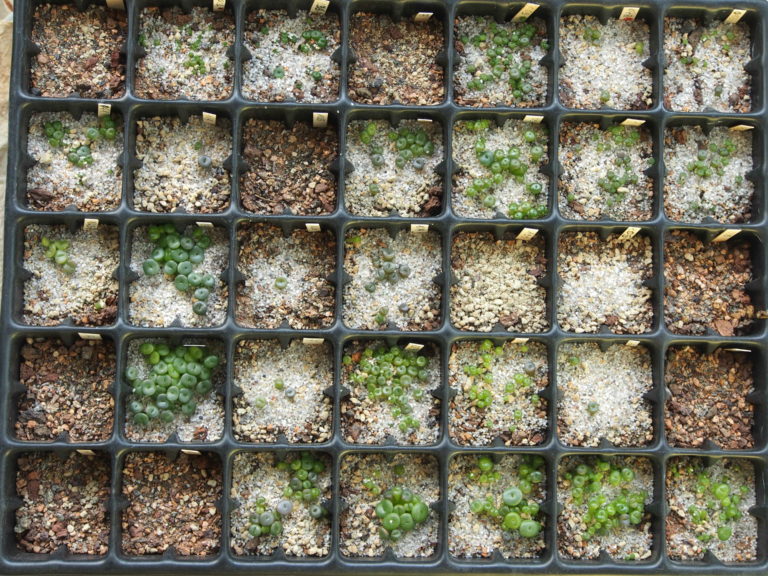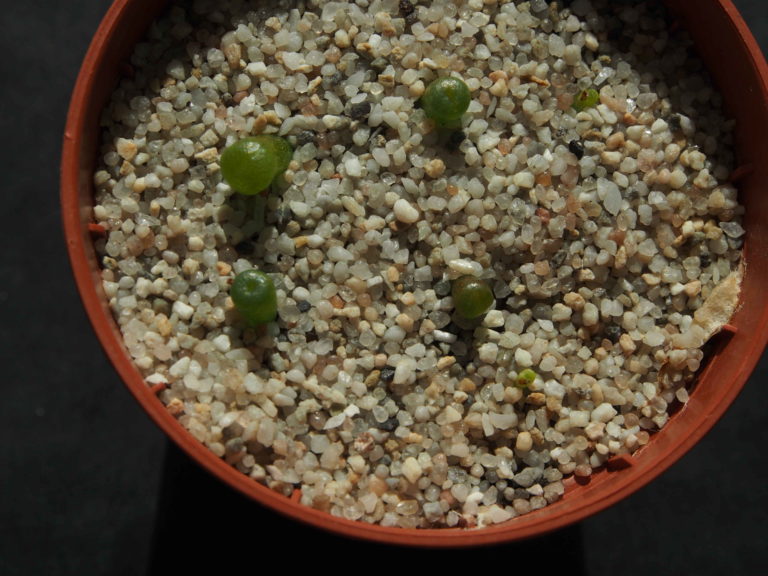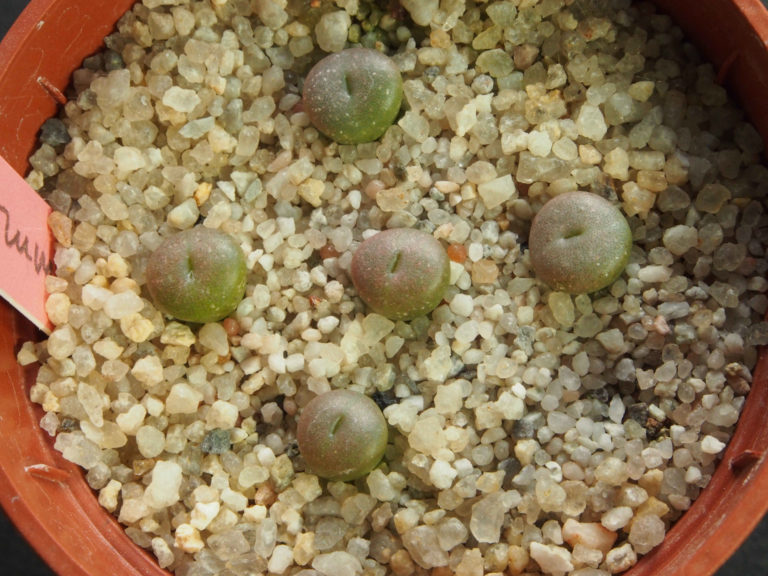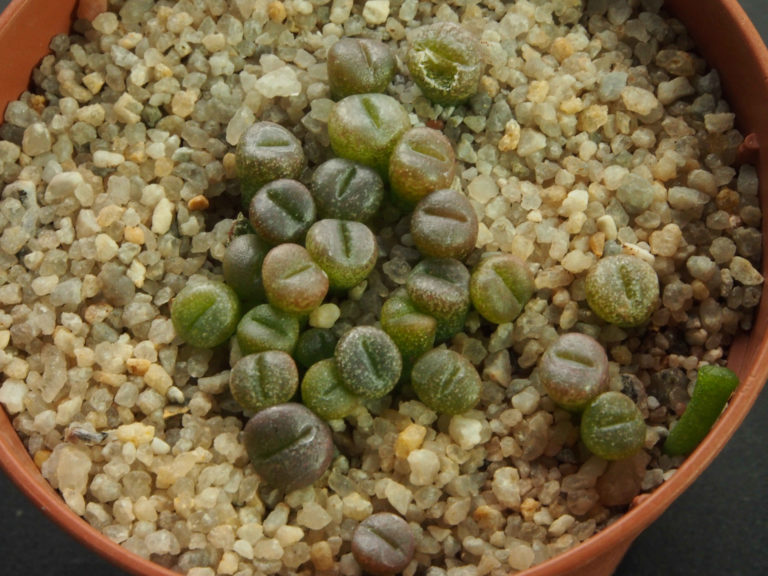Each expert has his own recipe for sowing Lithops successfully from Steven Hammer (in his book Lithops, jewels of the veld) to Nick Rowlette via Steve Brack (Mesa Garden site) or Terry Smale. If we compare them, a certain number of general rules emerge, they are summarized below. They are specified in the guide of Félix Simon on the website of the Cactus Francophone.
Here are two other “recipes” that can be applied to the less hot and sunny parts of Europe (U. Beyer), the other to the Mediterranean region (N. Cole). But everyone can (must?) horn in, which makes Lithops sowing really attractive.
General rules
Very mineral substrate, not calcareous and with a relatively fine texture. Pot deep enough.
Spring sowing (temperatures between 20 and 30 ° C) with seeds aged at least one year.
Sowing on a bed of fine sand, without burying the seeds and under plastic for the first two weeks. First watering at sowing time, by soaking in water with fungicide, then once the plastic removed, spraying every day with rainwater.
Keep the pots in a very bright place but without direct sun for at least 18 months.
The easiest species to sow are: Lithops aucampiae, bromfieldii, hallii, hookeri, karasmontana, lesliei, olivacea, pseudotruncatella, salicola and schwantesii.
Attention several species have tiny seeds (Lithops julii, marmorata, olivacea).
A wide range of seeds from my collection is available in the Shop section. The 2019 list has just been put online.
My sowing technique
I sow almost exclusively at the end of spring, when maximum temperatures begin to exceed 30°C, in round pots of 5.5 cm diameter or in seed trays with 35 cells of 5 × 5 cm side. The substrate is exclusively composed of granite soil reconstituted according to the formula 1/3 earth, 1/3 sand, 1/3 small gravel. The seeds are deposited on a thin film of quartz sand. As the seedlings develop, I progessively add some quartz or granite gravel.


Depending on the mood, the time available, the size of the seeds or the rarity of the sown species, I apply one of the following three methods to deposit the seeds in their pot. 1 – I deposit each seed one by one with a slightly moistened toothpick (photo on the left), 2- I deposit the seeds in a piece of folded paper that I gently tap over the pot (photo in the middle), 3 – I take a pinch of seeds with two fingers and sprinkle the pot as if it were salt (photo on the right).
The sowing technique of Sylvain Burgaud
Sylvain Burgaud is an active member of the Cactus Francophone and a great sower of Lithops and Conophytum. He kindly authorized me to reproduce his sowing method.
The substrate is composed of a homogeneous mixture of pumice stone, perlite, quartz sand, vermiculite, charcoal and potting soil. It is poured into 5×5 cm square pots, the bottom of which is tapped by a thin piece of paper towel to prevent the substrate from escaping. The substrate is lightly packed using a wooden block to obtain a flat surface. The pots are then soaked in water, just before spreading the seeds (10 to 30 per pot) on the surface, without covering them. They are just sprayed to avoid some of them to remain suspended on elements of the substrate.
The pots are immediately placed 14h per day under artificial lighting (aquarium tubes located 6 or 7 cm over the surface of the pots), at room temperature. They are covered with plastic film (baggy technique) until a satisfactory germination rate is obtained. This technique has the inconvenient of favoring the formation of algae on the surface of the pots with a risk of clogging of the substrate which can hinder the good development of the seedlings. To avoid this drawback, it is possible to leave the pots in the open air as soon as they are sown, however they should be left to soak in 5 mm of water until the emergence of the first seedlings (technique developed by Klaus Ingenwepelt).


